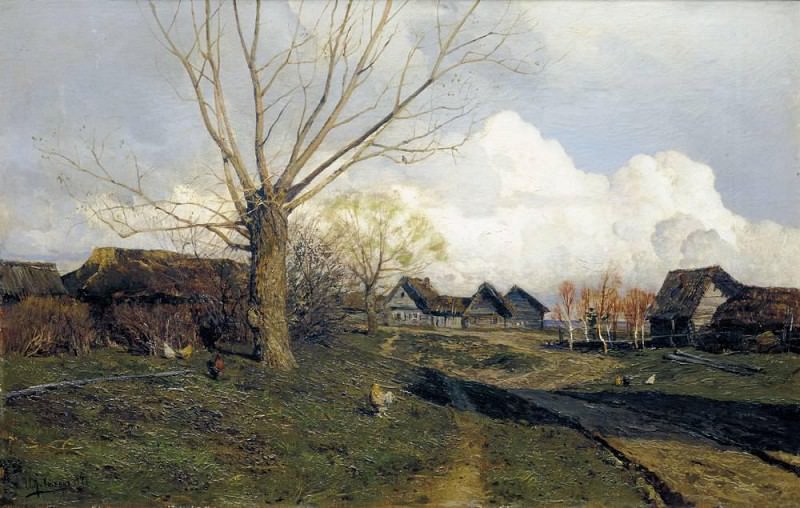Savvinskaya settlement near Zvenigorod 1. 1884 Isaac Ilyich Levitan (1860-1900)
Isaac Ilyich Levitan – Savvinskaya settlement near Zvenigorod 1. 1884
Edit attribution
Download full size: 1000×635 px (0,1 Mb)
Painter: Isaac Ilyich Levitan
Levitan, a sensual artistic lyricist, lived a short but fruitful life. A favorite pupil of Savrasov at the art school, where the future painter studied from the age of thirteen. The canvases created by him, and there are more than a thousand of them, are still appreciated at face value throughout the world. A famous painter, landscape painter, extremely susceptible to his mood. This is reflected in his works, which he himself called "canvases of mood. Levitan’s first love was Chekhov’s sister.
Description of Isaac Levitan’s painting "Savvinskaya Sloboda near Zvenigorod".
Levitan, a sensual artistic lyricist, lived a short but fruitful life. A favorite pupil of Savrasov at the art school, where the future painter studied from the age of thirteen. The canvases created by him, and there are more than a thousand of them, are still appreciated at face value throughout the world.
A famous painter, landscape painter, extremely susceptible to his mood. This is reflected in his works, which he himself called "canvases of mood.
Levitan’s first love was Chekhov’s sister. His brother respected the painter, but strongly recommended and even insisted not to tie his life to him, due to the eternal uncertainty of the artist. After the failure, Levitan began a serious depression, which was reflected in his paintings.
An artist can’t just paint out of necessity. Each of his landscapes is performed on thin strings of the soul. Sometimes Levitan created canvases like a major chord. Sometimes, on the contrary, a dragging minority crept heavy clouds over the canvas.
Work in Savvinskaya Sloboda began in 1884, when Levitan arrived there with his old friend Perepletchikov. The result of the artist’s fruitful work was a whole cycle of paintings by the author, one of which was the painting "Savvinskaya Sloboda near Zvenigorod."
"Sloboda" is executed so naturally and vividly that it creates a feeling of lightness and airiness of the air near Moscow. Nesterov wrote about the artist that nobody had ever managed to see nature as peaceful as Levitan saw it.
The artist died in the prime of his creative powers from a long illness. He painted continuously. His last story remained incomplete, but it is, in all its incompleteness, of great artistic value.
Кому понравилось
Пожалуйста, подождите
На эту операцию может потребоваться несколько секунд.
Информация появится в новом окне,
если открытие новых окон не запрещено в настройках вашего браузера.
You need to login
Для работы с коллекциями – пожалуйста, войдите в аккаунт (open in new window).




















COMMENTS: 1 Ответы
Это шедевр, смотрю бесконечно, просто мое состояние...
You cannot comment Why?
The overall atmosphere of the painting is one of early spring or late autumn. The trees are mostly bare or show the first signs of budding, and the ground is a mix of sparse grass, mud, and lingering patches of dry vegetation. The sky is filled with large, dramatic clouds, suggesting a dynamic weather system, perhaps an approaching or receding storm, or simply a bright, airy day. The lighting is somewhat diffused, indicating overcast conditions or a time of day when the sun is not at its brightest.
The subtexts of the painting lie in its portrayal of rural life and the passage of seasons. The humble dwellings and the presence of livestock evoke a sense of simple, traditional existence. The bare tree and the state of the vegetation suggest a transitional period, perhaps a time of waiting for renewal after winter or a reflection on the end of a cycle. The painting captures a moment of quietude and natural beauty, emphasizing the enduring character of the landscape and its inhabitants. It could be interpreted as a commentary on the resilience of nature and rural communities through the changing seasons, or a nostalgic look at a way of life that is being shaped by time. The dramatic sky can also symbolize the larger forces of nature that influence human existence.